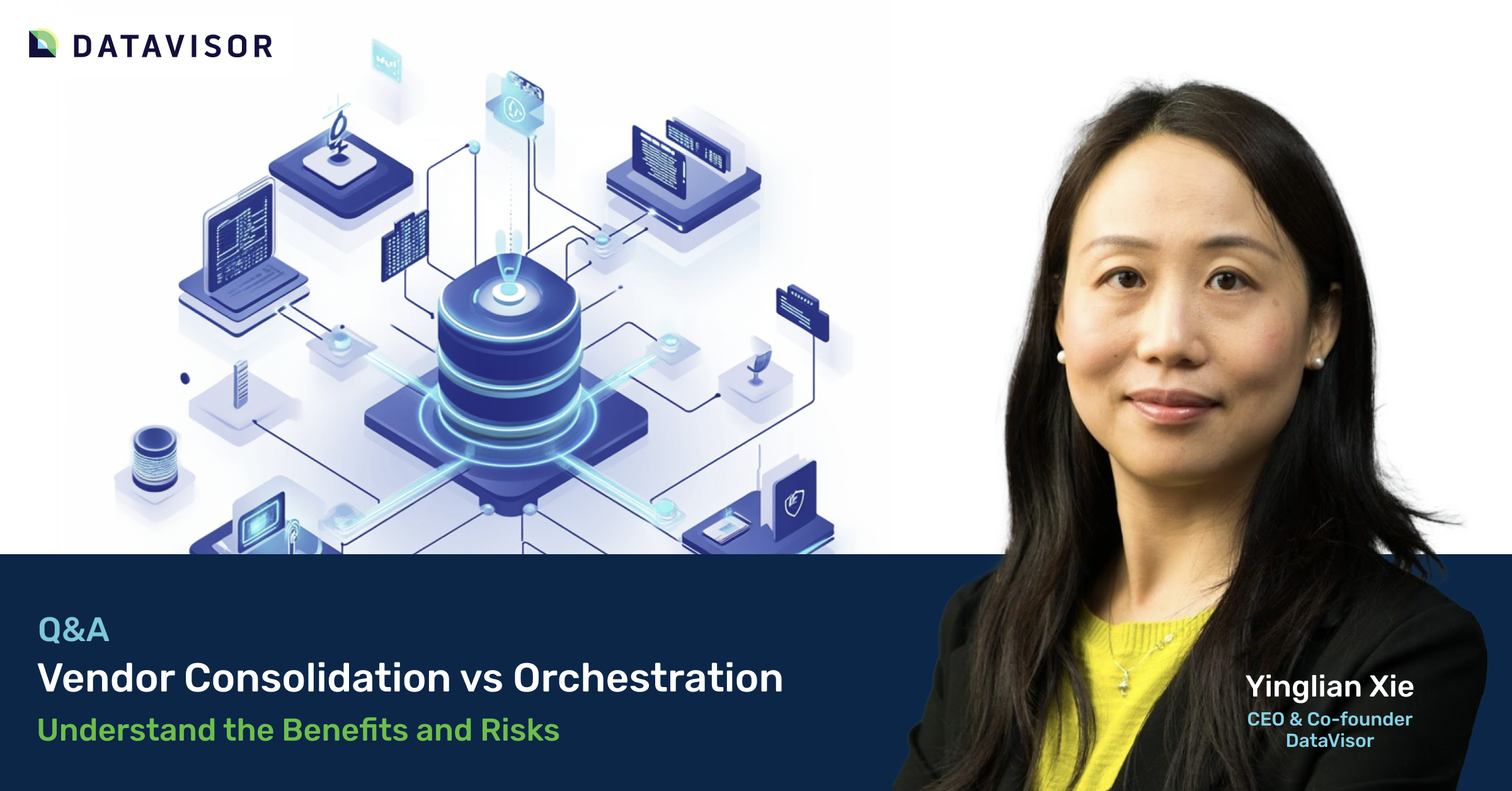
Vendor Consolidation vs Orchestration: Understand the Benefits and Risks with DataVisor's Co-founder and CEO, Yinglian Xie
As businesses adapt to the dynamic market landscape, the emphasis on profitability and streamlined operations has brought vendor consolidation into sharp focus. But when it comes to fraud and AML, is vendor consolidation really the right approach to consider – or does it limit access to innovative fraud-fighting and AML capabilities? How do businesses reduce vendor cost without increasing internal headcount and cost – all while improving business results? Is that an impossible task?In this insightful Q&A, Yinglian Xie, Co-founder and CEO at DataVisor, shares her perspective on vendor consolidation versus vendor orchestration in the fraud and AML space, the shift towards a customer-centric model, and the pivotal role of AI and centralized intelligence in driving these transformations, to outline paths towards achieving stronger fraud and AML business results with reduced total cost.
Q: What are the current market trends influencing the move toward vendor consolidation?
Xie: The market has seen significant changes, particularly due to economic factors such as inflation and higher interest rates. Companies are increasingly focused on profitability, not just top-line growth. This focus has led to a greater emphasis on efficiency and cost reduction, resulting in the scrutiny of vendor spending. One popular approach of cutting down vendor spending is vendor consolidation – a process to reduce the number of vendors that a business needs to work with. Vendor consolidation not only cuts down the vendor spending, but also reduces the overhead of integration and management costs of many third-party solutions.
Q: What are the potential risks of vendor consolidation?
Xie: The industry often pushes for vendor consolidation as a way to streamline operations and reduce costs. While consolidation does reduce cost and overhead, in the fraud and AML space, it also limits access to different third-party data, intelligence, and new solutions available in the market. Companies will have to choose between the reduced cost benefits and the potential rise of fraud and compliance risks – a tradeoff that can actually increase the business loss and defeat the purpose of vendor consolidation or elimination.
Q: What’s the alternative?
Xie: DataVisor is advocating for a smarter approach of vendor management in the fraud and AML space: vendor orchestration. Instead of simply reducing the number of vendors, the focus should be on integrating and managing them more effectively, ensuring you retain the flexibility to leverage the best signals and solutions, yet only in the limited manner to wherever they fit the best, in order to reduce the overall cost. This approach allows organizations to consolidate silos without sacrificing the ability to innovate and adapt. More specifically, we advocate consolidating siloed point solutions with a centralized intelligence and decision workflow, so as to streamline the process of working with multiple vendors and orchestrate them in a more efficient and effective manner. For example, for many financial institutions, “customer onboarding” is a critical step to minimize the number of fraudulent accounts being created in the first place. Financial institutions can build a smarter and more effective workflow for this critical step by leveraging in-house data and signals to screen bad accounts. They can then prioritize lower-cost signals before calling expensive signals downstream, or segment their account populations to leverage different vendors for different segments, instead of merely cutting vendors. This vendor orchestration model preserves the competitive advantage of engaging multiple vendors, yet maximizes the results and simultaneously has the benefits of reduced third-party costs. From what we've seen, while consolidation limits tools, orchestration maximizes their performance.
While consolidation limits tools, orchestration maximizes their performance.
Q. Why is this approach controversial?
Xie: While the idea of vendor orchestration challenges the conventional wisdom around vendor consolidation, it opens the door to another more profound topic: how to build effective centralized intelligence and a decision workflow to maximize business results with reduced costs. At DataVisor, we believe that effective vendor orchestration provides a competitive edge by maintaining both innovation and operational efficiency, and DataVisor platform supports building sophisticated vendor orchestration capability from the get-go.
Q: What role does AI play in this transformation?
Xie: AI is central to this transformation, as it enables data-driven decision-making on a scale that was previously unimaginable. However, AI can only harness its full power when supported by strong data foundations that leverage all available data. To achieve this, it’s crucial to integrate diverse data sources into a centralized hub where data can be processed and analyzed in real-time throughout the entire account lifecycle. This data orchestration capability forms the backbone of centralized intelligence – a 360-degree, unified view of customer behavior. Centralized intelligence enhances the customer experience by ensuring consistent and personalized interactions across all touchpoints, resulting in more effective detection and prevention of financial crimes. With AI at the core, centralized intelligence ensures that every decision is informed by the most relevant data, leading to more accurate predictions, optimized operations, and ultimately a stronger fraud stance. This is the foundation for evaluating and making informed vendor orchestration decision flows.
Q: How will vendor orchestration via centralized intelligence benefit consumers?
Xie: There has been a noticeable shift from a transaction-centric to a customer-centric approach. FinTech companies are expanding their offerings to create more comprehensive solutions that attract and retain more customers. In the past, businesses in the industry that focused on specific services such as money transfers are now obtaining bank licenses and creating broader service ecosystems. This evolution is paving the way for a unified and consistent customer experience, supported by centralized intelligence.
Q. How does DataVisor support this new, more balanced approach?
The DataVisor platform empowers organizations to integrate and manage multiple vendor solutions seamlessly, allowing them to stay agile and adopt cutting-edge technologies without the limitations of traditional vendor consolidation. By centralizing intelligence while supporting sophisticated, distributed execution workflows, we enable our clients to reduce costs and management overhead, all while maintaining access to the best-in-class tools available in the market to maximize results and competitiveness.
Consolidate without Sacrifice
DataVisor provides a powerful platform that helps companies navigate vendor orchestration to capitalize on innovations in the fraud and AML space, while upleveling the customer experience in a very cost-efficient manner. Download our latest whitepaper, “Is Vendor Consolidation the Right Approach?” to learn how you can leverage the platform to integrate with multiple vendors, optimize workflows, and benefit from centralized intelligence.
Latest Articles







